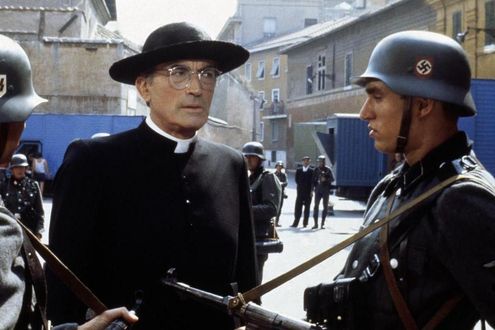My Father’s House
by Joseph O’Connor (Harvill-Seeker/£20.00/€15.99)
The tale about the ‘Scarlet Pimpernel’ of the Vatican has been often and well told, and even filmed by Hollywood in 1983, with the chief character being played by Gregory Peck. In this novel, however, Joseph O’Connor provides a fresh version of what is the very remarkable story. It illustrates how circumstances, no matter what we think, determine the course of all our lives.
The so-called Pimpernel was Hugh O’Flaherty, who was born on February 24 1898 near Kishkeam in Co. Cork. He was raised in Killarney, where he was educated at the Presentation Brothers’ Monastery and St Brendan’s College. Having opted for the priesthood he studied philosophy at the Jesuit College at Mungret, near Limerick city, and theology at the College of Propaganda Fide in Rome. Following his ordination in December 1925 he was posted to the Vatican diplomatic service. An accomplished linguist, he served in Egypt, Haiti, Santo Domingo and Czechoslovakia.
Back in war-time Rome in 1941-42 he served as a chaplain in allied prisoner of war (POW) camps in northern Italy. He also began assisting Jews, deserting Italian soldiers and those fleeing the Italian Fascist government. When Italy dropped out of the war the country fell under the control of the Wehrmacht and the SS. Aware of their fate if captured by the Germans, thousands of Jews and escaped soldiers were seeking safe homes in Rome and the Vatican City. With seven friends Msgr O’Flaherty set about organising an ‘Escape Line’ for them.
The ‘Escape Line’ with Msgr O’Flaherty at its centre eventually became a vast and intricate rescue network. It provided ‘safe houses’ in convents, monasteries, seminaries, churches, homes and public buildings. It also provided food, clothing, medical attention, money and identity papers to refugees and even enabled servicemen to contact their families.
After the war it was confirmed that more than six and a half thousand people ‘on the run’ at that time availed of the secret route.
Msgr O’Flaherty was aware of the danger in which he had placed himself. Herbert Kappler, the Gestapo commander in Rome, knew he was the key-figure in the ‘Escape Line’ and almost succeeded in having him arrested outside the Vatican City on a number of occasions.
And a plan devised by Kappler to kidnap and have O’Flaherty assassinated was foiled by the intervention of an informant. In addition some of the most senior officials in Vatican City did not look kindly on O’Flaherty’s extra-mural activities. They were fearful that the rampant success of the ‘Escape Line’ might goad the Germans into invading the Vatican City.
Joseph O’Connor introduces as a choir the other members of the ‘Escape Line’ who were also prepared to place their lives in danger. Besides the conductor, O’Flaherty, there were two sopranos: Delia Kiernan and Marianna de Vries. Delia was the wife of Thomas J. Kiernan Ireland’s ambassador to the Holy See. She was also known as Delia Murphy, the well-known singer. Marianna de Vries was a Swiss freelance journalist based in Rome and a friend of O’Flaherty.
The Alto was the Contessa Giovanna Landini. A young widow, a member of the Roman aristocracy also a friend of O’Flaherty. The tenors were Sir D’Arcy Osborne, British ambassador to the Vatican, Major Sam Derry of the British Royal Artillery and Enzo Angelucci. An Italian American, Enzo conducted his business in news agents at the corner of St Peter’s Square. Finally, the bass was John May, a Jew from the East End of London.
There is a curious analogy between the heroics of Hugh O’Flaherty and Oskar Schindler. Both responded nobly to circumstances in which they found themselves. Joseph O’Connor’s re-telling of the wartime exploits of Hugh O’Flaherty and his intrepid colleagues is most interesting. However, for those who wish to fully appreciate their heroics might also like to read J.P. Gallagher’s The Scarlet and the Black (reissued 2009).


 The ‘Scarlet Pimpernel’ (played by Gregory Peck; The
Scarlet and the Black, 1983) confronts the German military.
The ‘Scarlet Pimpernel’ (played by Gregory Peck; The
Scarlet and the Black, 1983) confronts the German military. 